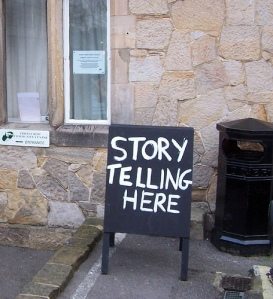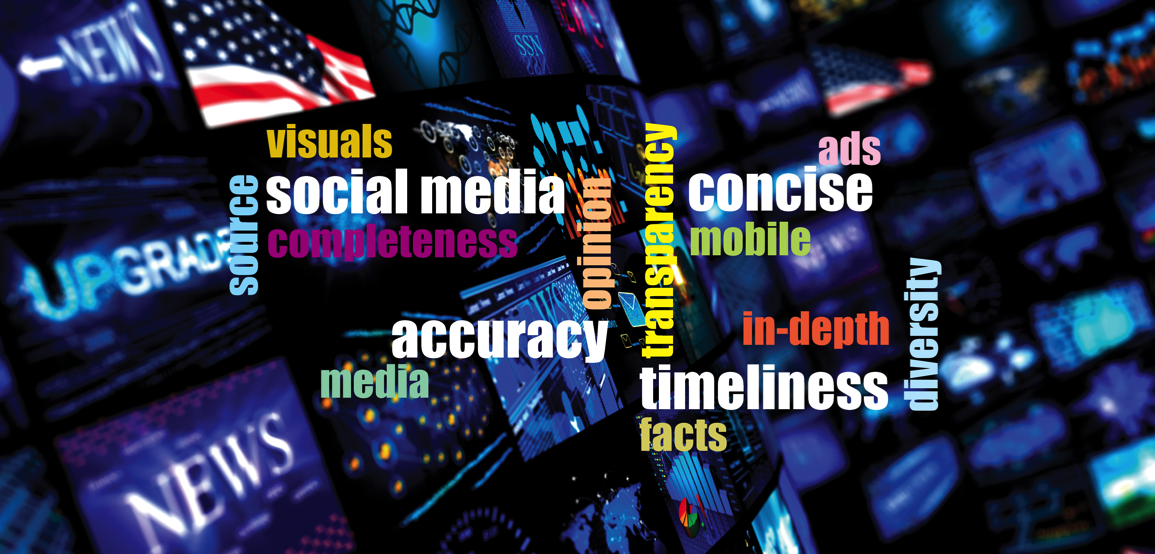 Research on TV storytelling strategies that NewsLab conducted a decade ago just made the rounds on Twitter, for reasons I can’t explain. I discovered this thanks to BackTweets, one of the sites on Mark Luckie’s latest list of social media tools. It felt great to know that people were still reading it, until I realized it wasn’t that easy to find. It’s still posted on the legacy NewsLab site, but wasn’t online here–until now, that is.
Research on TV storytelling strategies that NewsLab conducted a decade ago just made the rounds on Twitter, for reasons I can’t explain. I discovered this thanks to BackTweets, one of the sites on Mark Luckie’s latest list of social media tools. It felt great to know that people were still reading it, until I realized it wasn’t that easy to find. It’s still posted on the legacy NewsLab site, but wasn’t online here–until now, that is.
The seven habits of highly effective storytellers
by Deborah Potter and Annie Lang
The story begins with a highly produced sequence that grabs the viewer’s attention right from the start. It has all the elements-compelling video and sound, fast edits and wipes, sophisticated graphics-the kind of story that draws applause in newsrooms.
But what about in living rooms?
It turns out that producing stories this way can actually make harder for viewers to understand and remember what they’ve seen. That’s because watching television news is not a simple task. Even when viewers are paying attention, when they’re not distracted by their surroundings, they still have to process information on two tracks simultaneously, both audio and video. And some production techniques and storytelling styles can make that process even more difficult.
That’s the basic message from a stack of studies that most journalists know nothing about. The research results have never been seen in most television newsrooms, in part because they’re written by and for academics. But if you look past the graphs and data tables, the studies suggest some simple steps you can take to help make stories more memorable-suggestions some news directors, reporters and photographers already apply because they believe it makes good sense. Consider these seven steps as a way to enhance your value to your viewers.
Let the Emotions Talk
It may be obvious that emotion compels attention and engages the viewer. That’s one reason emotional stories work so well on television. And studies confirm that people remember emotional stories better than dull ones. But there’s a catch. Emotional content requires more effort for viewers to process.
Lane Michaelsen, [former] news director at KTHV-TV in Little Rock, AR, says that when a story has emotional video, he sees no point in using wipes, graphics or gimmicks. “I think it’s distracting to people,” he says. “It clutters up the newscast. Just because it’s cool is no reason to do it.”
The research supports his perspective, and goes even further. Studies suggest that when a story has emotional video or just an emotional theme, you should keep the presentation simple to avoid overtaxing the viewer.
Slow it Down
The human brain can be overwhelmed by too much information coming in too fast. But television stories often bombard viewers with information, combining quick cuts and multiple scene changes with non-stop narration. When this happens, the brain “chooses” between the audio and video channels of information, and guess what usually wins? Video, of course, because it’s easier to process. But while the video is being digested, that script you worked so hard on is making no impression at all.
Lisa Berglund-Jolly, former director of photography at KNSD-TV in San Diego, CA, used to be a fan of fast-paced editing. But now she says it depends on the story. “If the reporter is saying something important, I want my shots to be soothing, not too demanding, not too many cuts, so the viewer isn’t paying so much attention to the video and isn’t listening.”
That’s what the research says, too. If you’re dealing with a complex story and you don’t want viewers to miss the meaning, keep the editing pace moderate to slow.
Dare to be Quiet
Don’t be afraid to be quiet. If you have unusual video effects, compelling images, or complex graphics on the screen-be quiet. Studies show that a pause in the narration about two seconds long may improve comprehension and memory dramatically. And it wouldn’t make the story significantly longer, or force you to leave out any key information.
“Write something that will add to the experience of the viewer in seeing the picture,” the late Charles Kuralt of CBS News advised. “But when you can, have the courage to remain silent, and let the picture tell the story. Give people time to feel something.”
Match the Audio and Video
News director Scott Libin, [formerly] at KSTP-TV in Minneapolis, MN, is a firm believer in matching words to pictures. “Anytime the video diverges from the audio, I think it forces people to divide their attention,” he says. Libin urges reporters to match their narration to graphics almost word for word. He even believes that some information is best delivered by the anchor on camera. “There’s a lot to be said for eye contact.” [Libin is now news director at WCCO-TV in Minneapolis.]
Research says he’s right. Studies show that viewers remember stories better when the words, sounds and pictures are closely related. So whenever possible, tell the same story with the audio and the video. When you can’t, let the elements take turns. Use the video to attract attention or draw the viewer in, but don’t introduce complex or important information in the audio track right away.
Know How to Deal with Negative Images
Negative images and stories are compelling. They demand attention and they get it. But while viewers are looking at negative images, like crime or accident scenes, they may not pay attention to what they’re hearing and remember it. Studies have found that information in the audio track a few seconds before and during negative images may be completely forgotten, essentially erased by the strong video content. What follows the negative video, however, is remembered. So the solution is simple. Separate the important stuff from the negative video so the information doesn’t get lost.
“We do that on instinct,” says Tracye Fox, [former] news director at WTKR-TV in Norfolk, VA, citing a recent story about animal abuse. The reporter put the most important information about what investigators had uncovered in the narration, and covered it with news conference video, well before showing scenes of animal cruelty. It might not have been the most visually compelling approach, but the research suggests that viewers probably got more out of it.
Take a Literal Approach
Concrete words and pictures are easier for viewers to remember, but not all stories are about concrete things. When dealing with abstract ideas-in economics or science stories, for example-research finds that establishing relationships between elements of the story helps viewers understand the underlying concepts. So use graphics that show relationships instead of just raw facts or numbers. Or find video that illustrates the concept in a concrete way.
That’s what WFAA-TV’s Byron Harris did when he told the story of a new, faster computer chip. He compared information flowing through the chips to traffic, and used aerial video of streets and highways, giving viewers a concrete representation of an abstract idea. “I think about things people deal with every day and use them to explain [concepts],” Harris says. “Sometimes the most mundane things that occur to you really work.”
When you’re stuck for video and a graphic won’t work, use words that build pictures in your viewers’ minds. Studies indicate that if you provide the viewers with imagery they will remember the pictures in their heads, making it easier for them to recall the substance of the story.
Engage Your Viewers
To engage your viewers, tell stories on television the way you tell them in person. Use strong, chronological narratives whenever possible. Studies have found that narrative stories are remembered substantially better than stories told in the old “inverted pyramid” style. Whatever structure you choose, don’t make viewers search their memories in order to understand your story. Give them the information they need when they need it, so they can follow each part of the story. Use words which connect the pieces of the story to each other, and which make the chronology of events clear.
At WCPO-TV in Cincinnati, OH, former news director Stuart Zanger encouraged his staff to do exactly that. He even has a term for it: using “handrails” to help viewers follow complicated stories. “When we tell them something important we make sure they got it,” he says, by reinforcing or repeating essential information.
Why bother doing these things? Why worry about how information gets into people’s brains? It’s only television we’re dealing with, for goodness sake, not brain surgery. Well, consider all the choices viewers have for information. What makes them choose you? Could you get even more viewers to tune in if your newscast was as compelling as ever to watch, but easier to understand and remember? Might be worth a try.
After all, if we’re only getting information into people’s living rooms and not into their heads, we’re really only doing half a job. As KTHV’s Lane Michaelsen puts it, “If the viewers aren’t understanding the story, what are we putting it on the air for?” [Michaelsen is now news director at WTVJ in Miami.]
Annie Lang is associate professor of telecommunications at Indiana University.
This article was originally published by RTNDA Communicator magazine, October 1999.









3 Comments
[…] Seven habits of highly effective storytellers […]
[…] with. The anecdote Glass talks about and the arc McAdams cites gel well with Deborah Potter’s suggestion (albeit for TV storytellers, but equally applicable to audio alone) to rely on “strong, […]